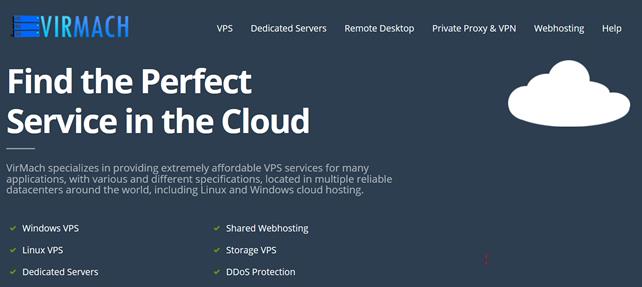productUG后处理帮助文档
Introduction
This onl ine help documentation contains the fol lowing sections:
Postprocessing in general
Postprocessing with Post
Developing a Post
Instal l ing a Post
Postprocessing in General
Your primary use of the Manufacturing appl ication is to generate NX tool paths in order tomanufacture parts.General ly,you cannot just send an unmodified tool path fi le to a machineand start cutting because there are many different types of machines.Each type of machinehas unique hardware capabi l ities and requirements; for instance, it can have a vertical or ahorizontal spindle, it can cutwhi le moving several axes simultaneously,etc.
Furthermore,each machine is control led by a computer (i e,controller) The control ler accepts a toolpath fi le and directs tool motion and other machine activity(e g, turning the coolant or air on and off)Natural ly, just as each typeof machine has unique hardware characteristics,control lers also differ insoftware characteristics For instance,most control lers require that the instruction for turning the coolanton be given in a particular code Some control lers also restrict the number of M codes that are al lowed inone l ine of output This information is not in the initial NXtool path
The tool path fi le hits the control ler's brickwal l of incompatibi l ity.The tool path data is notformatted for the machine.
Therefore, the tool path must be modified to suit the unique parameters of each differentmachine/control ler combination.The modification is cal led postprocessing.The result is apostprocessed tool path.
Two elements are essential for postprocessing.They are:
The tool path data is reformatted by the postprocessor for the machine.
1
match the fol lowing warning is issued:
"The output units and the units of the postprocessor do not match.The outputformats may be incorrect.You should set the units to post-defined."
Stop the postprocess and correct this mismatch. If you continue the fol lowingproblems may exist in your output:
1)The coordinate output wi l l be rounded incorrectly.
2) Inch/metric codes(G70/G71 or G20/G21)wi l l be incorrect.
3) If there is no decimal point in the coordinate output (G01 X1000Y2000), thecoordinate data wi l l be interpreted incorrectly.
4)Dimensional outputwi l l be either25.4timestoo smal l or too large.
5)Feed rate l imits(IPM/MMPM, IPR/MMPR)wi l l give erroneous warning messages.The postprocessor program is usual ly dedicated to a single type of machine/control lercombination.You can modify postprocessor fi le parameters for functions of that particular typeof machine/control ler combination.However,you cannot modify the program for use withanother type of machine/control ler combination.
NX provides a general ized postprocessor program,Post,which uses NX tool path data asinput,and outputs machine readable NC code.Post is highly customizable and can be usedfor both very simple and very complex machine tool/control ler combinations.
Post Bui lder is the NX product that is used to customize the postprocessor for each machinetool/control ler combination.
The Post Postprocessor
Postprocessing with Post
NX provides the Post postprocessor that can properly format tool paths for specific types ofmachine/control ler combinations.The Post postprocessor requires several elements:
The Event Generator, the Event Handler,and the Definition Fi le are dependent upon eachother.Together they transform the tool path data contained in the part fi le into a set offormatted instructions that they can be read and executed by a specific machine tool/control lercombination.
The Post Postprocessor does the fol lowing:
Uses the Event Generator to read the events(tool path data) in the part fi le.
Each event is processed according to the instructions contained in the Event Handler.
The resulting instructions are formatted according to the information contained in the
Definition Fi le.
The postprocessed machine control instructions are written to the Output Fi le.
The tool path data is postprocessed according to the instructions in the Event Handler and theformats in the Definition Fi le.
Developing a Post
To develop a post,you must create an event handler and a definition fi le.The recommenedmethod to create these is with Postbui lder.After creating a post,you wi l l have three fi les:<post_name>.tcl , ~.def,and~.pui .
The PostBui lder documentation is included in the Postbui lder kit and accessed fromwithin Postbui lder.
Installing a Post
In order for a post to be avai lable in NX,you must enter the name of the post and the locationsof the Event Handlerand definition fi le intothe postconfiguration fi le, usual ly
3
template_post.dat.This is pointed to by the entry TEMPLATE_POSTin your CAMConfiguration fi le.
Post Concepts
This section describes the fol lowing basic concepts related to Post:
The Manufacturing Output Manager (MOM)
The Event Generator
The Event Handler
The Definition Fi le
The Output Fi le
The Manufacturing Output Manager(MOM)
The Manufacturing Output Manager (MOM) is the central core of the NX Post postprocessormodule.MOM converts tool paths from model fi les into manufacturing output (machine code)by adding the required functions and data as described below:
1 . The Event Generator reads through the tool path data,extracts events and theirassociated variable information, then passes the events to MOM for processing.
2. MOM appl ies kinematics to the output then passes the event with its associated datato the Event Handler.
3. The Event Handler creates the event,processes it to determine the actions required,then returns the datato MOM.
4. MOM readsthe Definition Fi leto determine howto format the output for the machinetool control .
5. MOM writes the formatted output to the specified Output Fi le as machine code.Each of the components(Event Generator,Event Handler,Definition Fi le,Output Fi le)aredescribed in detai l on the fol lowing pages.
The Event Generator
The Event Generator:
1 . Cycles through the tool path data in the part fi le.
2. Creates events and parameter information from the internal tool path data.
3. Passes events on to MOM for processing.
4
Example
A Linear_Move eventwi l l cause the NC machine to move the tool along a straight l ine to aposition specified by the information stored in the parameters"X", "Y",and"Z" .
In this case the event generatorwi l l trigger the Linear_Move event and wi l l load thecorresponding parameters X,Y,and Z with the values that represent the end position of thestraight move.This information is then passed to the Manufacturing Output Manager forprocessing.
A complete description of recognized events,and the variables associated with each, isdescribed in the Setup Events,Machine Control Events,Move Events,Cycle Events,andMiscel laneous Parameters sections.
Order of Events
When you post process a tool path, there is a specific order for the events which cannot bechanged.The data is output in the fol lowing order:
START OF PROGRAM
UDEs attached to the program
START OF GROUP(NC_PROGRAM,GENERIC_MACHINE,GEOMETRY,METHOD)
UDEs attached to the group
UDEs attached to the geometry with Start Post commands
UDEs attached to the method with Start Post commands
UDEs attached to the cutting tool with Start Post commands
UDEs attached to the machine tool with Start Post commands
START OF OPERATION
TOOL CHANGE(not LOAD command)
UDEs attached to the operation with Start Post commands
INITIAL MOVE
UDEs attached to the operation with End Post commands
ENDOFOPERATION
UDEs attached to the geometry with End Post commands
UDEs attached to the method with End Post commands
UDEs attached to the tool with End Post commands
UDEs attached to the machine tool with End Post commands
END OF PROGRAM
You can write a handler foryour UDE's in the user.tcl fi le.You can only process the data afterthe UDE event has occurred.
The Event Handler
The Event Handler is a set of instructions that:
5
Must be developed for each machine/control ler combination.
Contains a set of instructions for each type of event to post process.
Defines how the tool path data and events are executed at the machine tool . Must use TCL.There should be a TCL procedure for each event that you want theEvent Handler to process.
The TCL procedure name for each event must be identical to the event nametriggered by the Event Generator.For example, the procedure name for a toolchange event mustbe MOM_tool_change.
The parameters associated with each event are passed to the Event Handleras global variables.The Setup Events,Machine Control Events,Move Events,Cycle Events,and Miscel laneous Parameters sections describe the val idevents and the parameters associated with each event.
See also:
TCL For The Post Writer
An Example Event Handler
The TCL interpreter serves as the translator for Post.
The Definition File
The definition fi le mainly contains static information about a specific machine tool (onedefinition fi le for each machine).
Most NC machines use addresses for each of the variables that control the machine.Forexample, the address X is used to store the value of the X coordinate of the end position of aLinear move.Each command l ine in an NC program changes the state of the machine bychanging the state of its addresses.Post wi l l provide tools that use the information in thedefinition fi le to format NC commands.
These tools wi l l be provided as an extension to core TCL.The definition fi le contains thefol lowing:
General machine attributes
The addresses that are supported by the machine
The attributes of each address(format,max,min)
A set of blocktemplates that describes how the addresses fit together to perform anaction on the machine.For example, the command G01 X[Xval]Y[Yval]Z[Zval]performs a l inear move.
As mention above, the definition fi le describes static data about a specific machine tool . Itcontains information that wi l l simpl ify the process of generating an NC program.
Refer to An Example Definition Fi le for an example.
6
We recommend using Postbui lder to create the Event Handler and Definition Fi le.Definition Fi le Metalanguage
The description of the elements subscribes to the fol lowing conventions:
UPPER_CASE non-quoted words must appear as typed;an italicizedword must be replaced with a member of its class;
The quotes( " ),braces( {, } )and brackets( [, ] )must appear as typed;
<e1 |e2| . . . |en>means you must pickexactly one of the ei ;
@@means that what appears between the@'s is optional .
{class}+means 1 or more of class
{class}*means 0 or more of class
Machine
Element Name
MACHINE name
Descrip tion
This isthe nameof the machinetool definition.
Example
MACHINE fanuc15m
Include
Element Name
I NCLU DE{name_1 name_2...name_n}
Descrip tion
Indicates that machine name inherits its definition fi le from machines name_1,name_2, ...,name_n.This causes name_1 to be loaded, fol lowed by and overridden by name_2, fol lowedby and overridden by name_3, . . . , fol lowed by and overridden by machine name_n.When a
7
definition fi le is loaded itonlyoverrides itemsthatappear in the loaded definition fi le.Any itemsthat have been previously set and that do not appear in that definition are left untouched.
Example
INCLUDE{ fanucfanuc15m}
Word Separator
Element Name
WORD_SEPARATOR"string"
Descrip tion
Instructs Post to output string between al l other words of output (see the nowsswitch below).If the stringcontains any ASCI I control characters(e.g. , newl ines, tabs,escapes) then thosecharacters of string must be entered in octal code.This is referred to as the octal rule.Forexample, if the word separator is atab then this argumentwould be"\01 1".
Example
WORD_SEPARATOR" "
End of Line
Element Name
END_OF_LINE"string"
Descrip tion
Instructs Post to output stringat the end of each l ine sent to the output.stringfol lows theoctal rule.
Example
END_OF_LINE"\012"
Tool Mounting
This describes the carriers or turrets,pockets, tool holders,and tools present on the machine.The system only uses thiswhen a machine in the machine tool l ibrary referencesthis
8
postprocessor.When the system retrieves the machine, it creates the necessary carriers andpockets in the Machine Tool View of the Operation Navigator and retrieves the specified toolsfrom the l ibrary and places them in the pockets.
The turret/pocket definition in the post .def fi le is copied to CAM setupwhen a machine isretrieved from l ibrary. It is presented to the user in the machine tool view of the ONT.Thisenablesthe user to edit thetool mounting on the machine in the machinetool view byassigning the tools to the desired pockets.
TURRET 1
{
POCKET 1
{
HOLDING_SYSTEM"300", "310", "320", "330"
PRELOAD_TOOL ugt0202_0090
TOOL_CONSTRAINTS
{
ANGLES0.0
XFORM_ANGLESX0.0Y0.0Z0.0
QUERY" "
}
}
POCKET2
{
. . . .
}
. . .
}
TURRET<id>
The id identifies the turret for the post and is written to the MOM global variablemom_turret_id
POCKET<id>
The id identifies the pocket for the post and is written to the MOM global variablemom_pocket_id
9
- productUG后处理帮助文档相关文档
- 坐标工地通路测帮助文档170330
- 圣坛魔电sigma帮助文档2.0
- 网格Fluent 中文帮助文档(1-28章)完整版 精心整理 包含19章、21章、24章
- 按钮会员销售软件帮助文档
- 科研东北大学科研综合管理系统帮助文档科研人员
- 升级步步高售后工具帮助文档
Cloudxtiny:£1.5/月,KVM-512MB/100GB/英国机房
Cloudxtiny是一家来自英国的主机商,提供VPS和独立服务器租用,在英国肯特自营数据中心,自己的硬件和网络(AS207059)。商家VPS主机基于KVM架构,开设在英国肯特机房,为了庆祝2021年欧洲杯决赛英格兰对意大利,商家为全场VPS主机提供50%的折扣直到7月31日,优惠后最低套餐每月1.5英镑起。我们对这场比赛有点偏见,但希望这是一场史诗般的决赛!下面列出几款主机套餐配置信息。CPU...

CloudCone中国春节优惠活动限定指定注册时间年付VPS主机$13.5
CloudCone 商家产品还是比较有特点的,支持随时的删除机器按时间计费模式,类似什么熟悉的Vultr、Linode、DO等服务商,但是也有不足之处就在于机房太少。商家的活动也是经常有的,比如这次中国春节期间商家也是有提供活动,比如有限定指定时间段之前注册的用户可以享受年付优惠VPS主机,比如年付13.5美元。1、CloudCone新年礼物限定款仅限2019年注册优惠购买,活动开始时间:1月31...

Virmach 3.23美元可用6个月的VPS主机
Virmach 商家算是比较久且一直在低价便宜VPS方案中玩的不亦乐乎的商家,有很多同时期的商家纷纷关闭转让,也有的转型到中高端用户。而前一段时间也有分享过一次Virmach商家推出所谓的一次性便宜VPS主机,比如很低的价格半年时间,时间到服务器也就关闭。这不今天又看到商家有提供这样的产品。这次的活动产品包括圣何塞和水牛城两个机房,为期六个月,一次性付费用完将会取消,就这么特别的产品,适合短期玩玩...

-
木马病毒什么是木马病毒?邮箱群发如何在电子邮箱中实现群发邮件?可以发外链的论坛有哪些可以发外链的论坛?缓冲区溢出教程哪里可以下载黑客教程,详细网址,什么是电子邮件 什么是电子邮件万网核心代理哪里可以注册免费代理?镜像文件是什么什么叫镜像文件,作用是什么?童之磊湖北中文在线数字出版有限公司怎么样?iphone越狱后怎么恢复苹果手机越狱之后能恢复原来吗?硬盘人什么叫“软盘人”和“硬盘人”?